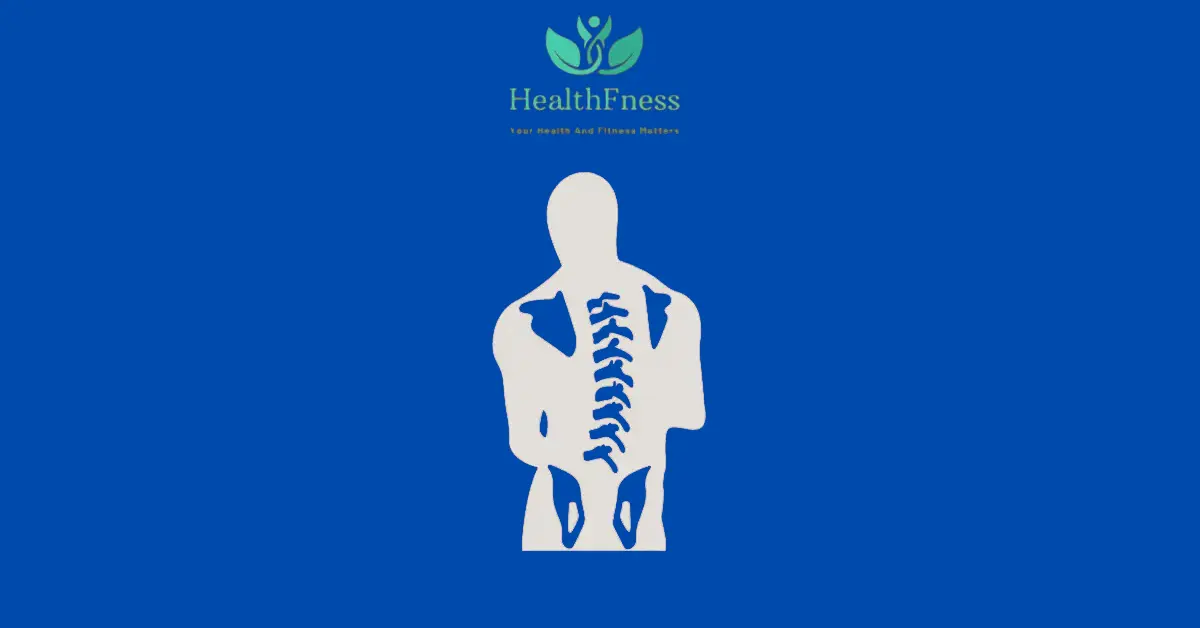An uncommon neurological condition🧠 called transverse myelitis causes inflammation and damage to the spinal cord. We shall examine crucial facets of transverse myelitis in this article, such as its prognosis, ICD-10 codes, and the use of MRI scans, and also discuss Transverse Myelitis Life Expectancy. So without further delay Let’s Get Started.
What is Transverse Myelitis?
An area of the spinal cord becomes inflamed in transverse myelitis, a neurological disorder. This inflammation impairs the spinal cord’s normal function and may cause a number of different neurological symptoms.
In the journey of Transverse Myelitis, resilience becomes our compass and hope our guiding star 🌟.
A study done by Shin C. Beh, Benjamin M. Greenberg, Teresa Frohman, Elliot M. Frohman, Neurologic Clinics that explore about transverse myelitis a neurological disorder:
This study explores transverse myelitis (TM) within acute non-compressive myelopathies, emphasizing diagnostic challenges and the importance of clinical history, examination, and MRI assessments. It discusses syndromes like Acute Complete TM (ACTM) and Acute Partial TM (APTM) for etiological insights, highlighting demographic factors and temporal profiles..
Causes and Risk Factors
Transverse myelitis has an elusive exact cause🤔. It may be connected to autoimmune diseases, demyelinating diseases including multiple sclerosis, and viral infections. Transverse myelitis may be more likely to occur if certain risk factors, such as a history of viral infections or autoimmune illnesses, are present.
Symptoms and Progression Of Transverse Myelitis
The location and degree of spinal cord injury determine the specific transverse myelitis symptoms⚠️ that manifest. Weakness, sensory abnormalities, trouble walking, and bladder and bowel problems are typical symptoms. Rapid symptom progression needs immediate medical treatment.
Explore the main causes and symptoms of transverse myelitis: Transverse Myelitis (TM) ↗
Transverse Myelitis Life Expectancy
Factors Affecting Life Expectancy
Numerous factors can affect a person with transverse myelitis’ life expectancy. These factors include the degree of the initial inflammation, the success of the treatment, the existence of underlying illnesses, and the general health of the patient.
Medical Management and Prognosis
Transverse myelitis must be treated quickly and aggressively to minimize its long-term effects. To minimize inflammation and stop future harm, immunosuppressive medications and high-dose corticosteroids are frequently utilized. The outlook varies; while some people recover function, others end up with long-term disability.
Improving Quality of Life
For those with transverse myelitis, concentrating on raising quality of life is crucial. Mobility and freedom can be recovered with the use of rehabilitation programs, physical therapy, and assistive technologies. Additionally important in boosting general well-being are emotional support and mental health services.
You may also like to read: Transverse Myelitis — a Review of the Presentation, Diagnosis, and Initial Management↗
Decoding ICD-10 Codes
What are ICD-10 Codes?
ICD-10 codes—the abbreviation for the International Classification of Diseases, 10th Revision—are alphanumeric codes used in medical coding to define and categorize various medical diseases. These codes facilitate more efficient communication between researchers, insurers, and healthcare professionals.
Transverse Myelitis ICD 10
ICD-10 codes for transverse myelitis are assigned based on the condition’s severity and other variables such the underlying etiology. Common codes for inflammatory diseases of the spinal cord and idiopathic transverse myelitis are G04.1 and G37.3, respectively.
Importance in Medical Coding
The precise reporting of transverse myelitis patients through accurate ICD-10 coding ensures proper treatment, reimbursement, and statistical analysis. These codes are used by healthcare facilities to efficiently manage patient care and allocate resources.
Role of MRI Scans
Importance of Imaging in Diagnosis
The diagnosis of transverse myelitis depends heavily on MRI (Magnetic Resonance Imaging). It enables medical experts to see the spinal cord’s anatomy and spot any damage or inflammation. Early diagnosis and treatment planning are made easier by this non-invasive imaging approach.
MRI Findings in Transverse Myelitis
Transverse myelitis patients’ MRI scans frequently show hyperintense signals on T2-weighted imaging, which signify areas of inflammation. In order to identify the underlying reason, contrast-enhanced pictures may show particular patterns of spinal cord involvement.
Differential Diagnosis
To distinguish transverse myelitis from other spinal cord illnesses such as multiple sclerosis, neuromyelitis optical, and spinal cord compression, MRI findings in this condition must be carefully assessed. Implementing specialized treatment plans requires accurate diagnosis.
Explore the diagnosis of acute transverse myelitis: An Approach to the Diagnosis of Acute Transverse Myelitis↗
Treatment for Transverse Myelitis
Acute Treatment Approaches
The goal of treatment during the acute stage of transverse myelitis is to lessen inflammation and stop additional damage. Intravenous corticosteroids at high doses are frequently used to reduce inflammatory immune responses. Other options to examine include immunosuppressive treatments and plasma exchange.
Long-Term Rehabilitation Strategies
Following the acute period, rehabilitation assumes a crucial role. Muscle strength, coordination, and general movement are improved by physical therapy, occupational therapy, and targeted exercises. Depending on each person’s needs, assistive aids like braces or wheelchairs may be suggested.
Multidisciplinary Care
Neurologists, physiatrists, physical therapists, occupational therapists, psychologists, and social workers are all needed to treat transverse myelitis. The issues that people encounter on an emotional and social level are also addressed in this cooperative endeavor in addition to the physical ones.
Coping with Transverse Myelitis
Emotional and Psychological Support
Transverse myelitis can have a major emotional impact. Those who experience a rapid change in their health may feel anxious, depressed, and frustrated. Coping mechanisms can be obtained through connecting with support groups and seeking professional psychological assistance.
Lifestyle Adjustments
Modifying one’s lifestyle is frequently necessary for adjusting to living with transverse myelitis. A more fulfilling existence can be attained by making living areas more accessible, picking up new skills for daily tasks, and leading a healthy lifestyle.
Support Groups and Resources
A sense of camaraderie and understanding can be created by joining support groups and making connections with people who have gone through comparable things. Online resources, local organizations, and a forum for advice sharing are all provided by these sources.
Research and Advances
Current Research Efforts
Current studies seek to identify the underlying causes of transverse myelitis and create specialized treatments. Understanding the immune response, locating biomarkers, and considering potential therapies to prevent or reverse harm are the main research areas.
Promising Therapies on the Horizon
Emerging treatments for transverse myelitis, like monoclonal antibodies and immune-modulating medications, show promise. These cutting-edge methods concentrate on particular immune system organs to improve illness treatment.
Hope for the Future
Despite the difficulties of living with transverse myelitis, advances in medical research give promise for improved therapies and a higher standard of living. Individuals and their healthcare professionals continue to be cautious in keeping abreast of advancements in the sector.
FAQS
Does transverse myelitis shorten life expectancy?
Life expectancy can be affected by transverse myelitis in a variety of ways, depending on the underlying cause, the success of therapy, and general health management. Even though some people can face difficulties, prompt intervention and thorough care can assist to improve outcomes and keep many people's life expectancies stable.
Do people recover from transverse myelitis?
Yes, many people do recover from transverse myelitis, particularly with quick medical attention, thorough treatment, and continuous care.
Is transverse myelitis life threatening?
When transverse myelitis is not treated right away, it can be serious and even fatal. While some situations may go better with the right care, complications and extreme inflammation can be quite dangerous to a person's health and wellbeing.
How quickly does transverse myelitis progress?
Transverse myelitis can develop in different people very differently. In some circumstances, symptoms may progress quickly over a period of hours or days, whilst in others, the progression may be more slow, taking weeks or even longer to play out. Early detection and intervention are essential for controlling the condition's progression.
Conclusion
A person’s life can be substantially impacted by the complicated neurological disorder known as transverse myelitis. Despite the severity of its effects, early diagnosis, suitable medical therapy, and thorough rehabilitation techniques can significantly improve outcomes and raise the quality of life. The future is bright for people with transverse myelitis because of continuous research and advances in medicine.
Video Credits:

Dr. Mark Jenkins, MD - General Physician (California, USA)
Dr. Mark Jenkins is a board-certified general physician based in the United States, specializing in preventive medicine, nutrition, and lifestyle health. With years of clinical experience in primary care, he is dedicated to helping patients and readers alike make informed, science-based decisions about their well-being.
As a trusted medical reviewer and contributor to Healthfness.com, Dr. Jenkins ensures that all health content meets the highest standards of accuracy, safety, and evidence-based medicine. His expertise bridges modern medical science with practical, everyday wellness strategies, making complex topics approachable for all audiences.
Outside the clinic, Dr. Jenkins is passionate about living the healthy lifestyle he teaches. He enjoys hiking with his dog, experimenting with vegetarian cooking, and exploring the latest health research. He believes that small, consistent lifestyle changes lead to lasting health improvements, and he aims to inspire readers to take proactive steps toward a healthier, happier life.
Explore more of Dr. Jenkins’ evidence-based insights at Healthfness.com



